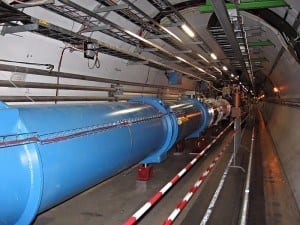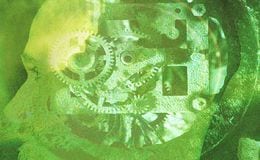
The Higgs boson “God particle” is a sub-atomic particle that is predicted to exist, but has not yet been seen
Scientists say they are close to capturing the Higgs boson “God particle.”
The Christian Science Monitor reports that scientists at the Large Hadron Collider at the European Organization for Nuclear Research announced that they have narrowed down the list of possible hiding spots for the Higgs boson (a.k.a. the God particle).
“I think we are getting very close,” said Vivek Sharma, a physicist at the University of California, San Diego, and the leader of the Higgs boson search at LHC’s CMS experiment. “We may be getting the first tantalizing hints, but it’s a whiff, it’s a smell, it’s not quite the whole thing.”
The Higgs boson is thought to be tied to a field (the Higgs field) that is responsible for giving all other particles their mass. It was proposed in 1964 by six physicists, including Peter Higgs. As the BBC reports, it is the last missing member of the Standard Model, which explains how particles interact. Because physicists don’t have a specific prediction for the mass of the Higgs boson itself, they must search a wide range of possible masses for signs of the God particle.
“With the data from this year we’ve ruled out a lot of masses, and now we’re just left with this tiny window, in this region that is probably the most interesting,” said Jonas Strandberg, a researcher at CERN working on the ATLAS experiment.
Read more about the Higgs boson “God particle” here and here.















